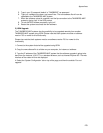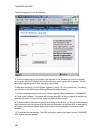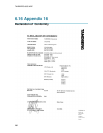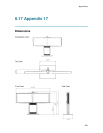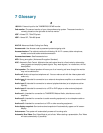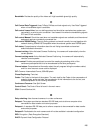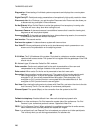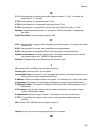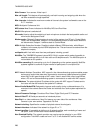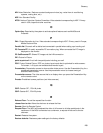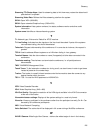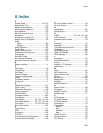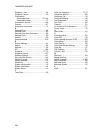TANDBERG 8000 MXP
290
Restricted call: A call to a 56 kbps network. By default the system will dial an unrestricted call (a
call to a 64 kbps network) and downspeed to 56 kbps if necessary.
S
S-VHS: S-video
S-video: The standard camera uses one of the S-video inputs in the codec.
Selfview: Outgoing video. In most cases, the image of your self.
Serial number: A unique number (the hardware serial number, listed in the System Information
menu) to identify your system towards your TANDBERG representatives.
Side-by-Side: Side-by-side view means that two pictures are displayed side by side each other
on the screen. You will se two equally sized pictures.
SIF: Standard Input Format, 352x240 pixels
SNMP: Simple Network Management Protocol.
SNMP Community: SNMP Community names are used to authenticate SNMP requests. SNMP
requests must have a password in order to receive a response from the SNMP agent in
the system. The SNMP Community name is case sensitive.
SNMP Trap Host: Identifies the IP-address of the SNMP manager.
SNMP traps: Generated by the agent to inform the manager about important events.
SoftMux: Ensures high reliability and includes the unique Downspeeding feature. It also makes it
possible to dial to another videoconferencing equipment, phones and mobile phones in a
uniform way, and provides an on-screen, real-time feedback on the progress of a call.
Split Screen: All the participants in a MultiSite conference are displayed on the screen. (Former
Continuous Presence)
Start Channel: Indicates the firstE1/T1 channel the system is allowed to use. The setting might
be used when if the E1/T1 line is shared with other equipment.
Start up video source: The video source that is on display when the system wakes up from
standby mode.
Status Format: Provides call quality feedback on the status line.
Streaming: Allows broadcasting of audio/video via an IP network.
Streaming Address: Defined as the IP-address of a streaming client, streaming server or a
multicast address.
Streaming Address Port: If several codecs are streaming to the same IP-address, different
ports have to be used in order for the client to know which stream to receive.
Streaming Allow remote Start: Streaming can be started from the Videoconferencing system
using the remote control, by using the Data port, or from external user interfaces like the
Web-browser or Telnet session.
Streaming Announcements: The system will announce to the network that it is streaming. This
enables a streaming client (e.g. a PC) to connect to the system's streaming session.
Used by Cisco IP/TV.
Streaming Password: Prevents unauthorized access to the streaming functionality.
Streaming Source: Select between local video and/or far end video to be streamed. Local and
far end audio is always streamed.



